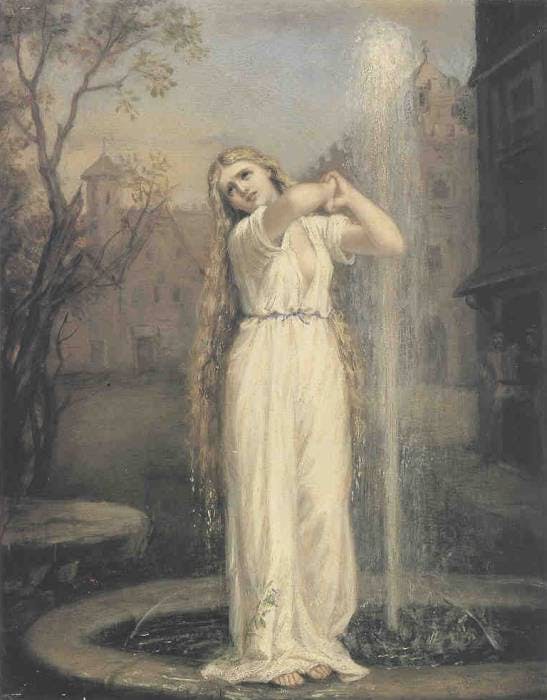Undine

Date created: 1872
Exhibited at the Society of British Artists, 1872.
Also spelled Ondine. Undine is a mythological figure of European tradition, a water nymph who becomes human when she falls in love with a man but is doomed to die if he is unfaithful to her. Derived from the Greek figures known as Nereids, attendants of the sea god Poseidon, Undine was first mentioned in the writings of the Swiss author Paracelsus, who put forth his theory that there are spirits called "undines" who inhabit the element of water. A version of the myth was adapted as the romance Undine by Baron Fouque in 1811, and librettos based on the romance were written by E.T.A. Hoffmann in 1816 and Albert Lortzing in 1845. Maurice Maeterlinck's play Pelleas et Melisande (1892) was in part based on this myth, as was Ondine (1939), a drama by Jean Giraudoux. The myth was also the basis of a ballet choreographed and performed by Margot Fonteyn.
The word is from the Latin unda, meaning "wave" or "water".
Source: Encyclopedia Britannica
See also Arthur Rackham's Undine and Paul Steck's Ophelia.